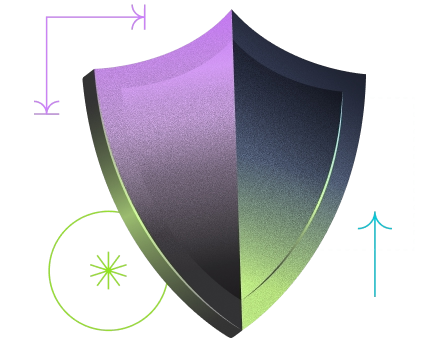In today's increasingly paperless business environment, understanding the distinction between electronic signatures and digital signatures has become essential for organisations of all sizes. While these terms are often used interchangeably, they represent different technologies with varying levels of security, legal standing, and appropriate use cases.
At Yousign, we regularly speak with businesses confused about which signature type best suits their needs. This comprehensive guide aims to clarify these differences, helping you make informed decisions about your document signing processes while ensuring compliance with relevant regulations.
Definition of an Electronic Signature
An electronic signature (commonly known as an e-signature) is any electronic symbol, sound, process, or mark associated with a record, adopted by a person with the intent to sign. In essence, an e-signature is the digital equivalent of a handwritten signature on paper, providing a way to indicate approval or consent electronically.
Common forms of e-signatures include:
- Typed names at the end of emails or documents
- Scanned images of handwritten signatures inserted into digital documents
- Click-to-sign buttons on websites and digital forms
- Drawing signatures on touchscreens
- Electronic signature platforms that record agreement to terms
E-signatures represent a broad category that encompasses various methods of electronically indicating consent or approval. They focus primarily on capturing the signer's intent rather than providing sophisticated technical security measures.
Everyday uses in business and personal contexts
E-signatures have become ubiquitous in many everyday scenarios:
- Contract management: Sales agreements, vendor contracts, and service agreements
- Human resources: Employee onboarding, policy acknowledgments, and benefits enrollment
- Customer onboarding: Account opening forms and service agreements
For businesses undergoing growth or structural changes, e-signatures can streamline many processes involved in company development, from updating contracts to modifying business structures.
Try electronic signature for free for 14 days
Definition of a Digital Signature
A digital signature is a specific type of electronic signature that employs sophisticated cryptographic technology to secure documents. Unlike basic e-signatures, digital signatures use mathematical algorithms to create a unique digital "fingerprint" for each document and signer.
Technical foundation of digital signatures
Digital signatures are built on a framework called Public Key Infrastructure (PKI), which uses a pair of cryptographic keys:
- A private key that only the signer can access
- A public key that anyone can use to verify the signature
When a document is digitally signed, the signature is created using the signer's private key. The resulting digital signature is unique to both the document and the signer. If the document changes in any way after signing, the digital signature becomes invalid.
NB:
While all digital signatures are electronic signatures, not all electronic signatures are digital signatures. Digital signatures represent a specific, security-focused subset of the broader e-signature category.
Key Differences Between E-signatures and Digital Signatures
Understanding the distinctions between these signature types is crucial for selecting the appropriate solution for your business needs.
Aspect | Electronic Signatures | Digital Signatures |
|---|---|---|
Definition | Any electronic mark indicating intent to sign | Cryptographically secured electronic signatures using PKI |
Technology | Simpler technology focused on capturing intent | Complex PKI-based cryptographic algorithms |
Security | Basic to moderate; varies by implementation | High; mathematically impossible to forge when properly implemented |
Verification | Usually based on access controls (email, password) | Based on cryptographic validation and certificate trust |
Audit Trail | Optional; varies by solution | Integral part of the solution; comprehensive |
Tampering Evidence | Limited; depends on the platform | Built-in; any change invalidates the signature |
Security level and verification methods
The security difference between these signature types is substantial:
- E-signatures typically rely on email verification, password protection, or IP address logging. They focus more on convenience while providing reasonable security for everyday transactions.
- Digital signatures provide cryptographic proof of both signer identity and document integrity. They create a mathematical link between the signer and document that can be independently verified and is virtually impossible to forge.
For organisations adopting remote work models, this security distinction becomes increasingly important, as noted in our article about remote team leadership where document security plays a crucial role.
Legal strength and evidential value
While both signature types can be legally binding, they carry different weights as evidence:
- E-signatures generally satisfy basic legal requirements for signature, particularly for routine business transactions. Their evidential value depends largely on the surrounding security measures and audit trail.
- Digital signatures offer stronger evidential value due to their built-in security features. They can prove document integrity, signer authentication, and timestamp verification, making them more robust in cases of dispute.
Regulatory frameworks
Various regulations govern electronic and digital signatures globally:
- eIDAS Regulation (EU): Establishes three levels of electronic signatures (simple, advanced, and qualified) with increasing security requirements
- ESIGN Act and UETA (US): Provide legal recognition for electronic signatures at the federal and state levels
- UK Electronic Communications Act: Provides UK-specific regulations for e-signatures
These frameworks typically recognize both e-signatures and digital signatures but may grant special status to certain types of digital signatures (like qualified electronic signatures in the EU).
Legal Validity and Compliance
Are electronic and digital signatures legally binding?
Yes, both signature types can be legally binding in most jurisdictions. Most countries have enacted legislation that prevents signatures from being denied legal effect solely because they are in electronic form.
However, there are important considerations:
- Specific document types may have special requirements (e.g., deeds, wills)
- Certain industries have additional regulatory requirements (e.g., banking, healthcare)
- Cross-border transactions may need to meet multiple jurisdictional requirements
Important:
Even though both signature types can be legally valid, digital signatures may provide stronger evidence in case of disputes due to their enhanced security features.
Signature types under eIDAS regulation
The EU's eIDAS regulation defines three levels of electronic signatures:
- Simple Electronic Signatures (SES): Basic e-signatures without specific security requirements
- Advanced Electronic Signatures (AES): Must uniquely identify the signer, maintain control of signature creation, detect subsequent changes, and link to signed data
- Qualified Electronic Signatures (QES): Advanced signatures based on qualified certificates issued by trusted service providers; legally equivalent to handwritten signatures
For businesses navigating digital transformation, understanding these distinctions is essential for maintaining compliance while improving efficiency.
Use Cases for Each Signature Type
Choosing between e-signatures and digital signatures depends on several factors, including security requirements, regulatory constraints, and business needs.
When to use a standard e-signature
E-signatures are typically suitable for:
- Low to medium-risk transactions: General business agreements, consent forms
- Internal approvals: Policy acknowledgments, expense approvals, internal workflows
- Customer-facing documents: Service agreements, terms and conditions acceptance
- HR processes: Onboarding paperwork, policy distributions, benefits enrollment
For businesses focusing on streamlining their operations, e-signatures can significantly improve productivity in many routine document workflows.
When to choose a digital signature
Digital signatures are generally preferred for:
- High-value transactions: Major financial agreements, property transfers
- Highly regulated industries: Banking, insurance, healthcare, pharmaceuticals
- Cross-border transactions: International business requiring compliance with multiple jurisdictions
- Situations requiring long-term verification: Documents that may need verification years later
For businesses managing multiple contract types across different departments, implementing effective contract management systems that support both signature types can provide optimal flexibility.
Security Features of Digital Signatures
The enhanced security of digital signatures stems from several technical features that protect document integrity and verify signer identity.
Authentication, integrity, and non-repudiation
Digital signatures provide three critical security elements:
- Authentication: Verification that the signature actually comes from the claimed signer
- Integrity: Assurance that the document has not been altered after signing
- Non-repudiation: Prevention of signers from denying they signed the document
These protections make digital signatures particularly valuable for businesses concerned about security in their document workflows.
Role of PKI and digital certificates
Public Key Infrastructure (PKI) is the foundation of digital signature security:
- Certificate Authorities verify the identity of individuals or organisations
- Digital certificates bind a public key to a verified identity
- Certificate validation allows recipients to verify the authenticity of certificates
For organisations implementing digital culture changes, these security features provide essential trust infrastructure for paperless processes.
Frequently Asked Questions About E-signatures vs Digital Signatures
What is an electronic signature?
An electronic signature is any electronic symbol or process attached to a document with the intent to sign. This includes typed names, "I agree" buttons, and signatures created with e-signature platforms, focusing primarily on capturing intent rather than technical security.
What is a digital signature?
A digital signature uses cryptographic technology (PKI) to create a unique mathematical "fingerprint" for each document and signer. They rely on digital certificates from trusted authorities and provide stronger security through document integrity verification and tamper detection.
Are electronic signatures legally binding?
Yes, electronic signatures are legally binding in most jurisdictions worldwide. Laws like ESIGN, UETA, and eIDAS grant them the same legal standing as handwritten signatures for most business transactions, though requirements vary by jurisdiction.
Which signature type is more secure?
Digital signatures are significantly more secure, using cryptographic algorithms and trusted certificate authorities to detect tampering and verify signer identity. Standard e-signatures provide reasonable security but lack the mathematical verification and tamper-evident features of digital signatures.
When should I use a digital signature instead of an electronic signature?
Use digital signatures for high-value transactions, regulated industries, cross-border transactions, documents requiring long-term verification, and scenarios with heightened security concerns. For routine approvals and lower-risk transactions, standard e-signatures are sufficient.
Choosing the Right Solution for Your Business
When selecting between signature types, assess your risk profile, evaluate your specific document needs, verify compliance requirements for your industry, and balance security with usability.
At Yousign, we offer secure, legally compliant electronic signatures that meet the needs of modern European businesses. Our platform provides the perfect balance of security, compliance, and ease of use to support your digital processes.
Ready to Streamline
Your Document Signing Process?








